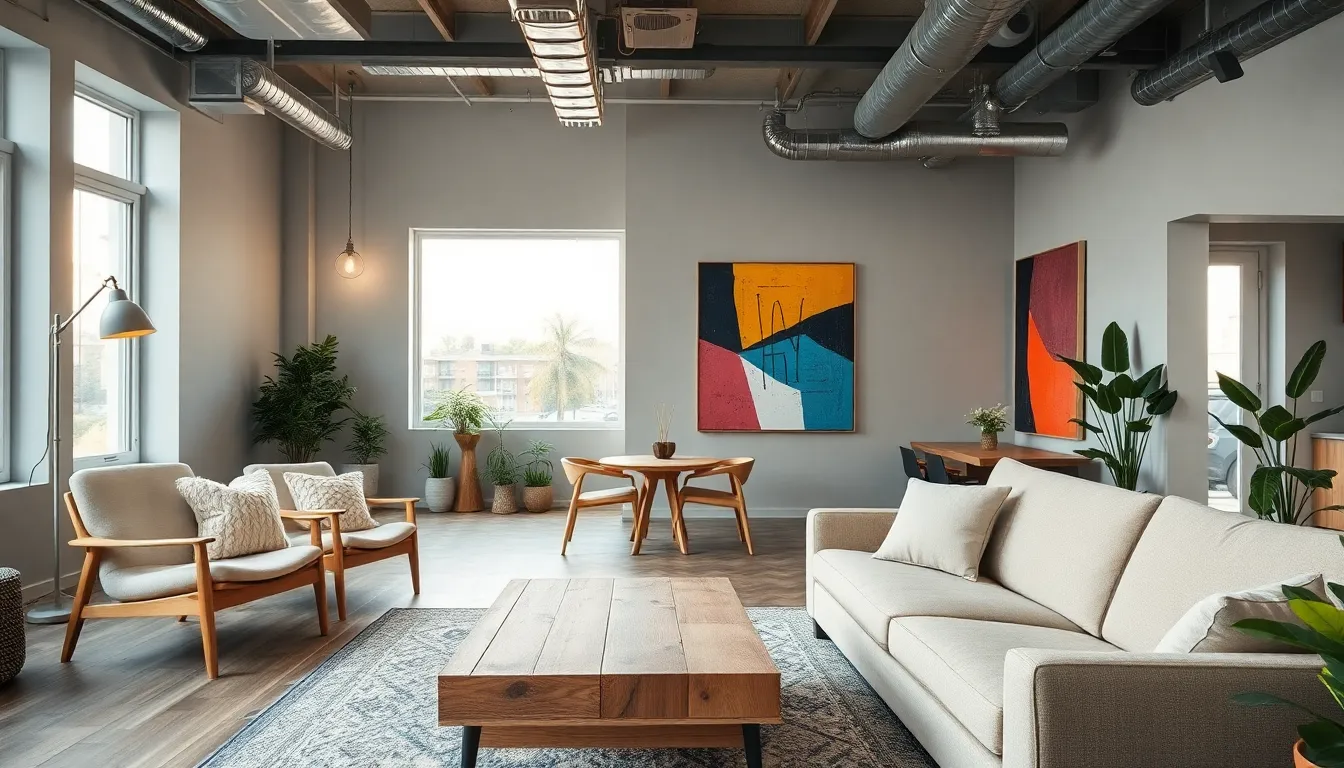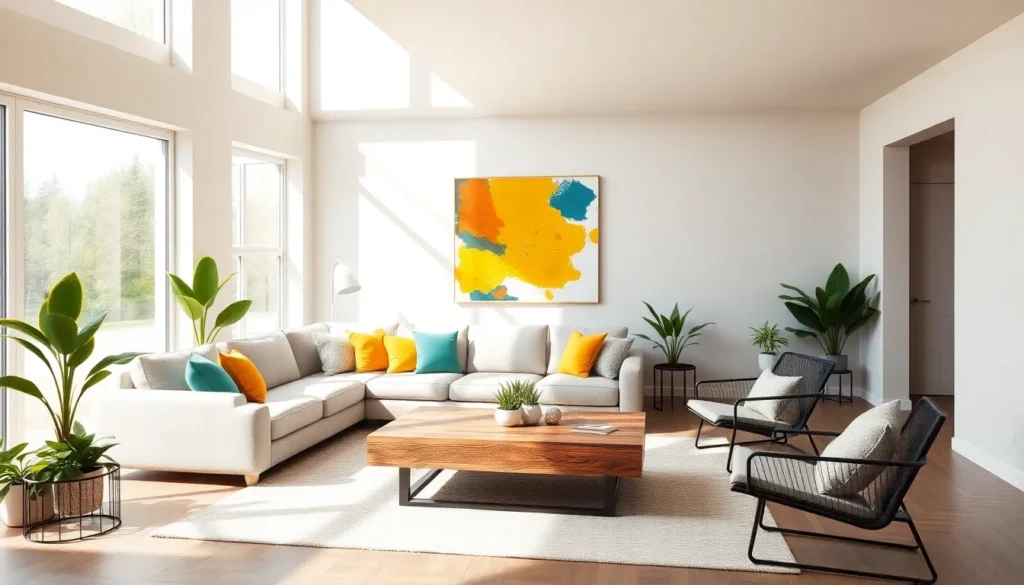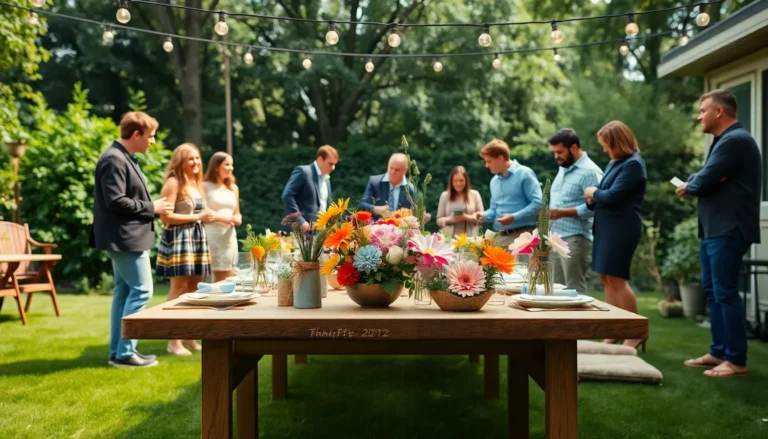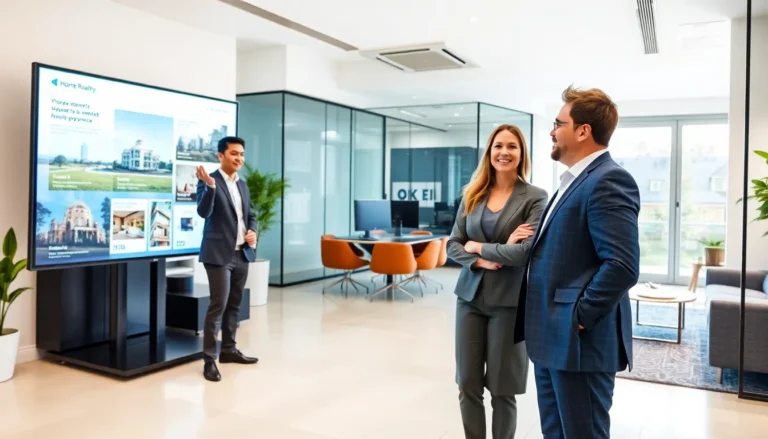Table of Contents
ToggleIn the ever-evolving world of interior design, understanding current trends and incorporating local culture can transform living spaces into something unique and personal. For homeowners looking to enhance their properties, exploring the various styles and elements available today is crucial. Whether it’s making a statement with contemporary designs or embracing eco-friendly approaches, there is much to consider. Homerocketrealty offers insights into creating spaces that are both aesthetically pleasing and functional, blending creativity with practicality.
Understanding Interior Design Trends

Popular Styles in Interior Design
Interior design is a reflection of individual taste, culture, and lifestyle. Today, several styles dominate the market, appealing to diverse preferences. Some of the most popular include:
- Minimalism: Characterized by simplicity, clean lines, and a functional approach, minimalism embraces the notion of ‘less is more.’ It emphasizes open spaces and neutral colors, often incorporating natural elements.
- Industrial: Drawing inspiration from warehouses and factories, the industrial style exposes structural elements like beams, ductwork, and pipelines. It typically features a palette of raw materials like wood and metal.
- Scandinavian: This design emphasizes functionality, simplicity, and coziness. With a focus on light colors and materials like wood, this style fosters a welcoming atmosphere.
Contemporary Design Elements
Contemporary design is constantly changing, embracing new ideas and innovations. Key elements include:
- Open Floor Plans: These promote fluidity between spaces, making homes appear larger and encouraging social interaction.
- Sustainable Practices: Contemporary homes often reflect a commitment to sustainability with eco-friendly materials and energy-efficient appliances.
- Bold Accents: From statement furniture to vibrant artwork, contemporary designs incorporate bold elements to make striking visual impacts.
Classic Designs with a Modern Twist
While trends evolve, classic styles remain timeless. But, they can adapt to modern tastes, resulting in designs that feel both familiar and fresh. For example, combining traditional furniture with contemporary art can create an intriguing juxtaposition that appeals to a wide audience.
Incorporating Local Culture into Design
Choosing the Right Color Palette
Colors play a vital role in interior design, influencing mood and atmosphere. Incorporating local culture into the color palette can create a strong connection to one’s community. For instance, a coastal home might use shades of blue and sandy beige to reflect its coastal environment. Choosing colors that resonate with local landmarks or history can infuse personality into the home, celebrating its unique cultural context.
The Psychology of Colors in Home Design
Understanding the psychology of color is essential for effective interior design. Colors can evoke emotions:
- Blue: Often associated with calmness and serenity, this color works well in bedrooms and bathrooms.
- Yellow: This happy hue can energize spaces but should be used sparingly, as too much can overwhelm.
- Green: Representing nature, green can promote relaxation. It’s perfect for living rooms and spaces meant for unwinding.
By thoughtfully selecting colors based on both aesthetic preferences and local culture, homeowners can create a space that feels cozy and inviting while promoting well-being.
How to Create a Cohesive Look
Selecting Furniture and Accessories
Creating a cohesive interior design involves thoughtfully selecting furniture and accessories. Furniture should complement the overall design style, whether it’s minimalist or industrial. Key considerations include:
- Scale & Proportion: Ensure that the furniture fits the size of the room to maintain balance. Oversized pieces can crowd a small space, while tiny items may get lost in larger areas.
- Harmony in Texture: Mixing textures (e.g., smooth, rough, soft) adds depth and interest to a design but should be done strategically to avoid chaos.
Maximizing Space with Functional Layouts
To create the best flows in a home, effective spatial layouts are crucial. Considerations might include:
- Zoning Areas: Clearly define areas for cooking, dining, and relaxing, especially in open-concept spaces.
- Furniture Arrangement: Position furniture to help conversation and accessibility, ensuring pathways are clear and inviting.
By focusing on functional layouts, homeowners can maximize their space while still achieving a striking design.
Sustainability in Interior Design
Eco-Friendly Materials and Solutions
Sustainability is more than a trend: it’s a necessary shift in interior design. Homeowners increasingly seek materials that are eco-friendly and sourced sustainably. Options include:
- Reclaimed Wood: Often used in flooring or furniture, reclaimed wood reduces the demand for new lumber and adds character to a space.
- Low-VOC Paints: These paints improve indoor air quality by reducing harmful emissions, making them a healthier choice for home environments.
Designing for Energy Efficiency
An energy-efficient design optimizes resources, reducing both carbon footprint and utility bills. Techniques include:
- Energy-Efficient Appliances: When renovating kitchens or laundry rooms, selecting appliances with Energy Star ratings can lead to significant savings.
- Natural Lighting: Incorporating large windows, skylights, or solar tubes can decrease reliance on artificial lighting, enhancing energy efficiency and improving mood.
Conclusion
Interior design is an intricate interplay of styles, culture, and sustainability. By understanding current trends and integrating local culture, homeowners can create spaces that not only reflect their personalities but also contribute positively to their communities. Focusing on cohesion, functionality, and environmental responsibility ensures that a design is both beautiful and purposeful. For those looking to transform their homes, embracing these concepts can lead to stunning, livable spaces that truly feel like home.







